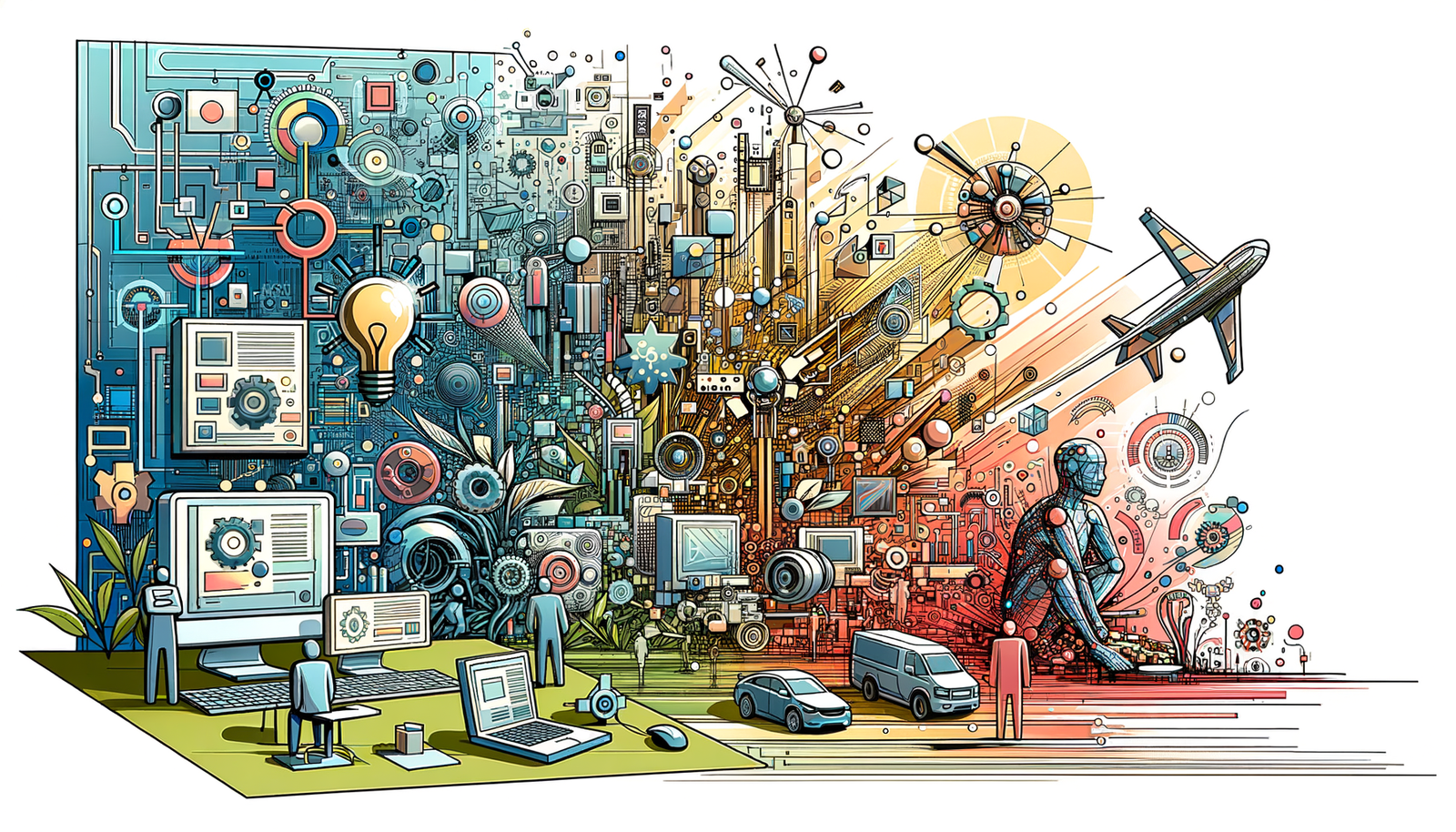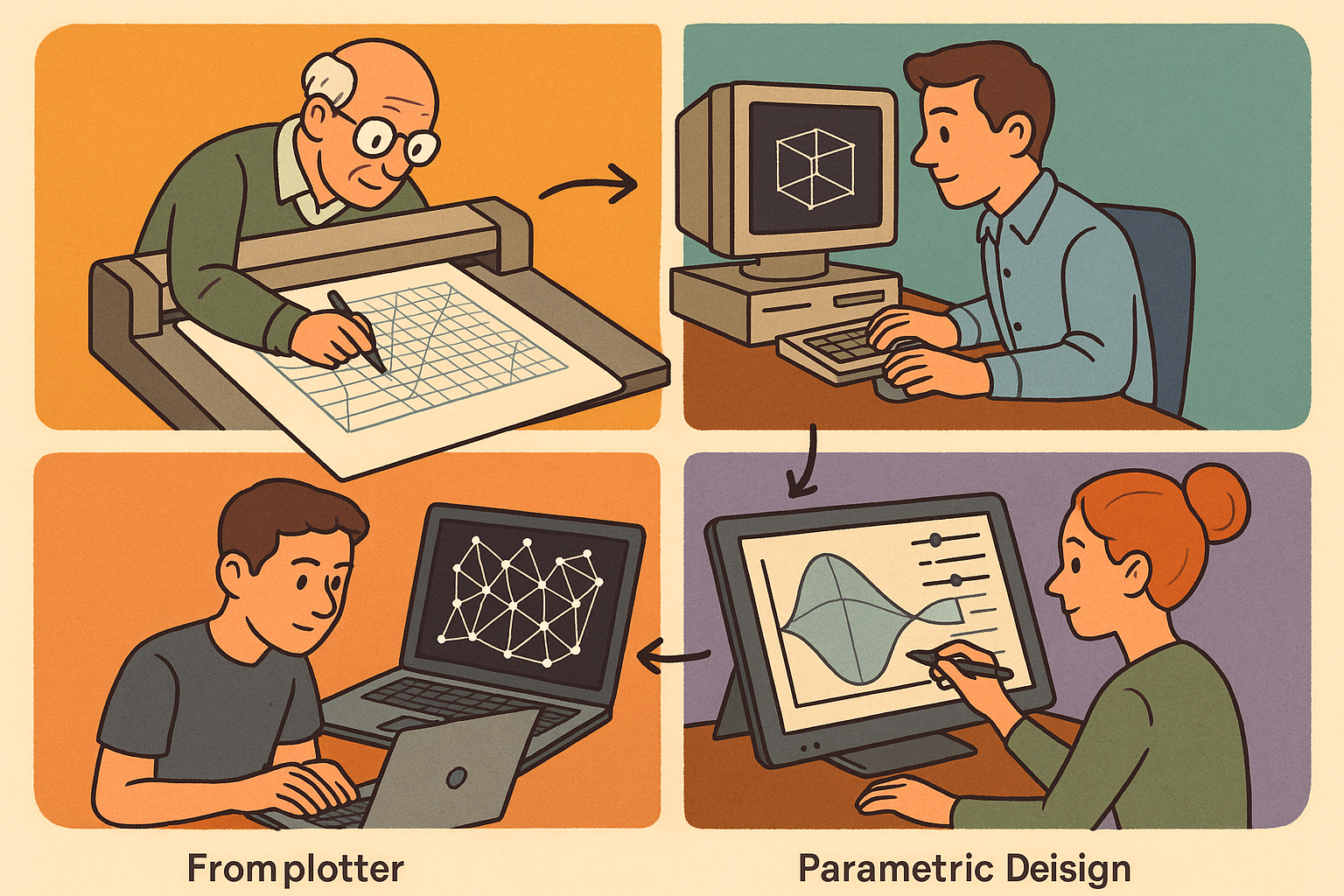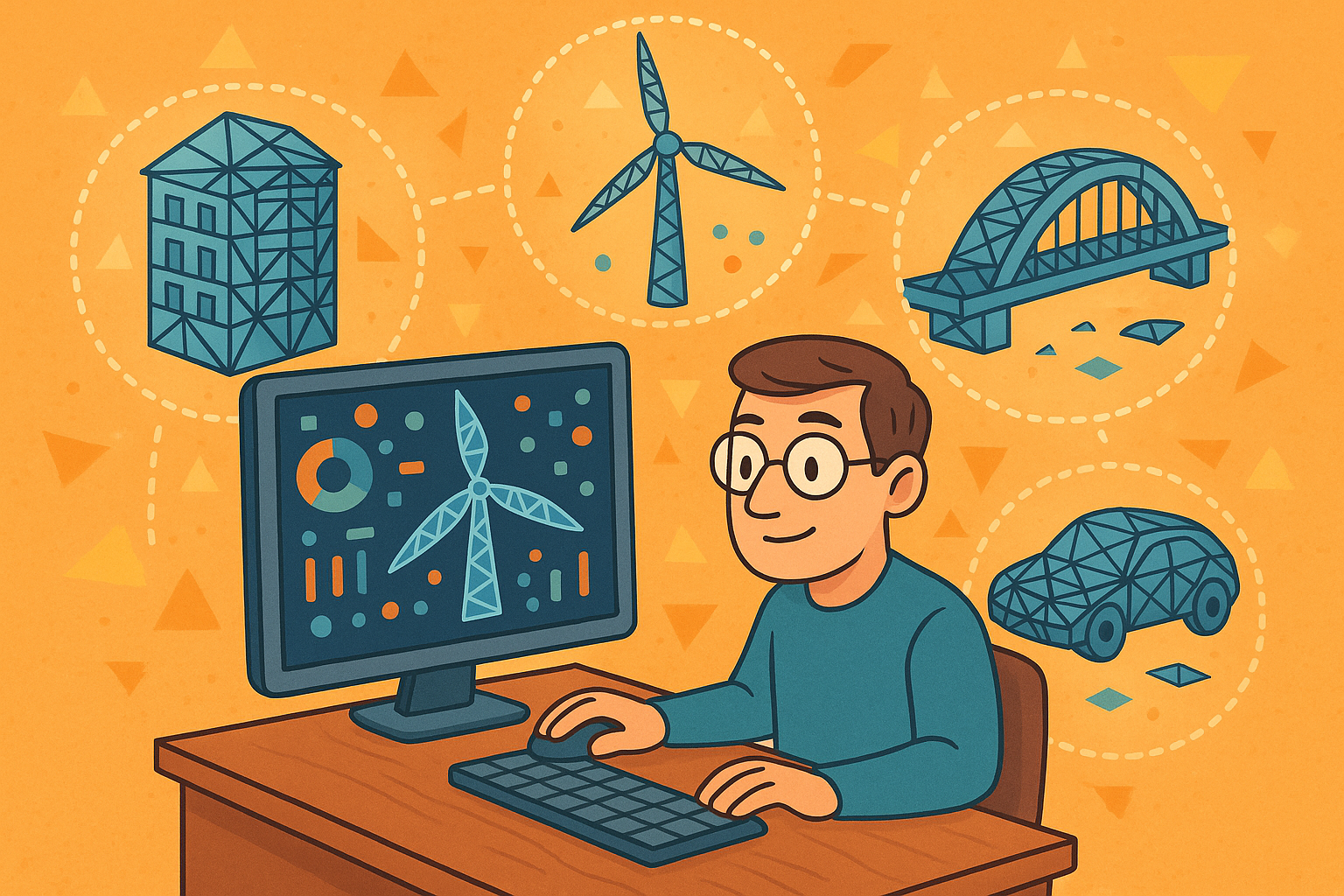Your Cart is Empty
Customer Testimonials
-
"Great customer service. The folks at Novedge were super helpful in navigating a somewhat complicated order including software upgrades and serial numbers in various stages of inactivity. They were friendly and helpful throughout the process.."
Ruben Ruckmark
"Quick & very helpful. We have been using Novedge for years and are very happy with their quick service when we need to make a purchase and excellent support resolving any issues."
Will Woodson
"Scott is the best. He reminds me about subscriptions dates, guides me in the correct direction for updates. He always responds promptly to me. He is literally the reason I continue to work with Novedge and will do so in the future."
Edward Mchugh
"Calvin Lok is “the man”. After my purchase of Sketchup 2021, he called me and provided step-by-step instructions to ease me through difficulties I was having with the setup of my new software."
Mike Borzage
Design Software History: Evolution of Digital Twin Technology: Key Milestones and Industry Contributions
June 26, 2024 3 min read


Introduction to Digital Twin Technology
In the rapidly evolving field of digital technology, the concept of the digital twin has emerged as a transformative force. **Digital twin technology** refers to the creation of precise digital replicas of physical objects, systems, or processes. These digital twins enable real-time monitoring, simulation, and analysis, providing valuable insights for optimization and innovation.
The fundamental principles behind digital twin technology involve the integration of various data sources to create a dynamic, data-driven model of a physical entity. This model can then be used to simulate and predict the behavior and performance of the physical counterpart under different conditions.
The origins of digital twin technology can be traced back to the growing need for more efficient and effective ways to manage and optimize complex systems. Early conceptualizations and theoretical frameworks laid the groundwork for the development of this technology. These early efforts were driven by the desire to improve decision-making processes, reduce operational costs, and enhance the overall performance of physical systems.
Key Milestones in the Development of Digital Twin Technology
The development of digital twin technology has been marked by several key milestones. Early pioneers and organizations played a crucial role in shaping the trajectory of this technology. Notable figures and institutions contributed to initial implementations and prototypes, laying the foundation for future advancements.
As the technology progressed, there was a significant shift from simple simulations to complex, real-time digital twins. This evolution was greatly influenced by other technological advancements such as the Internet of Things (IoT), artificial intelligence (AI), and big data. These technologies provided the necessary infrastructure and tools to create more sophisticated and accurate digital twins.
- IoT: Enabled the collection of vast amounts of real-time data from physical systems.
- AI: Facilitated the analysis and interpretation of data to generate actionable insights.
- Big Data: Provided the capacity to store and process large datasets, essential for creating detailed digital twins.
Major Contributions by Companies and Researchers
Several influential companies have been at the forefront of driving digital twin technology forward. **General Electric (GE)**, **Siemens**, and **Dassault Systèmes** are among the major players in this field. Their significant projects and contributions have propelled the development and adoption of digital twin technology across various industries.
**GE** pioneered the use of digital twins in the industrial sector, particularly in the optimization of complex machinery and equipment. **Siemens** has been instrumental in integrating digital twin technology with their industrial automation solutions, enhancing efficiency and productivity. **Dassault Systèmes** has focused on leveraging digital twin technology for product design and manufacturing, enabling more accurate simulations and improvements in product quality.
Prominent researchers and developers have also made substantial contributions to the field of digital twin technology. Academic researchers have published key papers and conducted groundbreaking studies that have influenced the development of digital twins. Industry experts have driven innovation through the development of new algorithms, models, and frameworks.
- Academic Research: Significant publications and studies that have shaped the theoretical foundation of digital twin technology.
- Industry Experts: Development of new tools and techniques for creating and utilizing digital twins.
Impact and Future Directions
Digital twin technology is currently being utilized across a wide range of industries, with transformative effects. In manufacturing, digital twins are used to optimize production processes, improve product quality, and reduce downtime. In aerospace, they enable the monitoring and maintenance of aircraft systems, enhancing safety and efficiency. In healthcare, digital twins are being used to personalize treatment plans and simulate the effects of medical interventions. Urban planning and smart cities also benefit from digital twin technology, allowing for better infrastructure management and resource allocation.
The future of digital twin technology holds great promise, with numerous emerging trends and potential challenges. Advancements in AI, machine learning, and edge computing are expected to further enhance the capabilities of digital twins. However, there are also challenges that need to be addressed, such as data privacy and security concerns, the need for standardized frameworks, and the complexity of integrating digital twins with existing systems.
Emerging trends in digital twin technology include the increasing use of augmented reality (AR) and virtual reality (VR) to visualize and interact with digital twins, the development of more sophisticated predictive maintenance models, and the integration of digital twins with blockchain technology for enhanced security and transparency.
Also in Design News

Design Software History: From Plotters to Procedural Intent: A Technical History of Generative and Parametric Design Software
January 04, 2026 13 min read
Read More
Semantic Meshes: Enabling Analytics-Ready Geometry for Digital Twins
January 04, 2026 12 min read
Read MoreSubscribe
Sign up to get the latest on sales, new releases and more …



